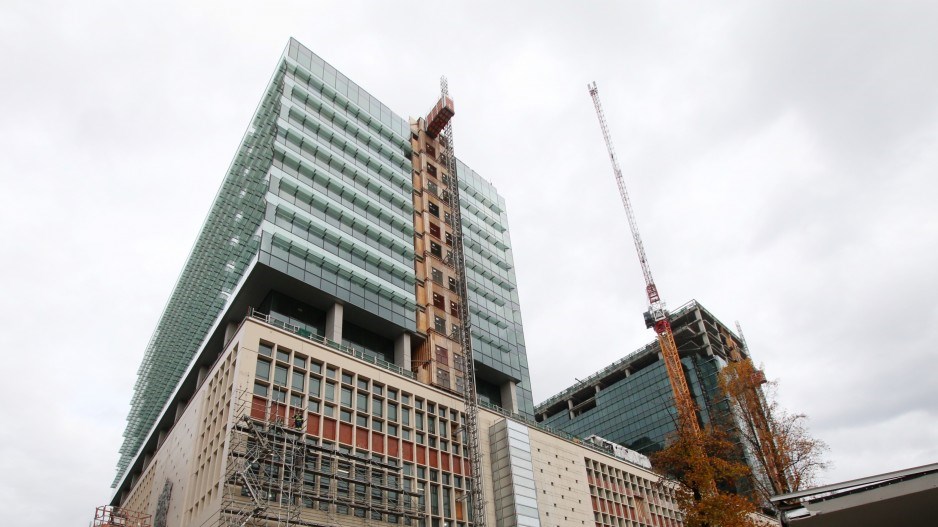Vancouver’s office real estate market is moving into new territory and industry experts are signalling that this will bring more opportunity for businesses in the city’s core.
The first is a dramatic shift in how companies use office space and the second is new supply owing to one of Vancouver’s largest development cycles in two decades, according to Susan Thompson, associate director of research at real estate company Colliers Canada.
This has resulted in higher vacancy rates, more lease options for tenants and a re-evaluation of how office space is being used in the city’s core, said Thompson.
“Vancouver has been operating in a state of lack of opportunity, very tight environment and not much choice for tenants,” she said. “When options came up, they often had to act quickly to secure them, because maybe the rents would go up or the options would be scooped up by another tenant.”
Office vacancy in downtown Vancouver has increased to roughly 12 per cent, as of the beginning of December, up from two per cent just prior to the pandemic, according to Colliers data. A balanced market is typically viewed as having a vacancy rate of between six and ten per cent.
“Despite being one of the lowest vacancy rates in North America, this is the first time we’ve had a tenant’s market in the last 20 years,” said Colin Scarlett, vice-chairman at Colliers Canada.
There is also a “healthy strong dynamic” where U.S.-based companies are considering opening offices in Vancouver, he said.
Scarlett added he would be spending time with “one of the world’s largest tech companies who aren’t currently in Vancouver.” He would not specify who that was.
“It’s still super healthy. We’re still seeing tons of demand and I’ve got a real-life example of it that I’m spending half the day tomorrow looking at space with a large company that is not currently in Vancouver,” Scarlett said.
More new office supply has been added to the downtown Vancouver market in the last decade than in the 20 years prior, according to Colliers.
Examples of new AAA office inventory include the Deloitte Summit built by Westbank Corp., The Stack built by Oxford Properties, The Post built by QuadReal Property Group, Bosa Waterfront built by Bosa Development and Vancouver Centre II built by GWL Realty Advisors. All of those buildings opened in the last two years.
“It’s this perfect storm. Despite the fact that the vacancy rates are really, really high, spaces that are improved and ready to go are leasing more quickly,” he said.
On the other end of the spectrum, older and less desirable office space is being left behind. This is making way for more conversation around the possibilities for conversions and renovations, according to Thompson.
“There’s what I call the four R’s of office revitalization. When you’ve got a building with high vacancy, this is the process you’re probably going to work through,” she said.
The first step is to evaluate rent to make it more competitive to attract tenants. The second is to renovate and consider whether there is a need to upgrade the office space, bring in modern features and invest in amenities.
The third step is to reposition and evaluate whether going after different types or tenants may be beneficial. The final step is to repurpose.
“This has a couple of different streams, conversions come in. Is it time for this building to become something else? … Or in extreme cases, is it time to tear down that building and for that site to become something new?” Thompson said.
Both she and Scarlett emphasize that if there was ever a time for office tenants to evaluate their lease, it’s now.
“Vancouver tends to go through this cycle of ups and downs quite quickly. We generally don’t sit in that tenant’s market zone for very long,” Thompson said.




